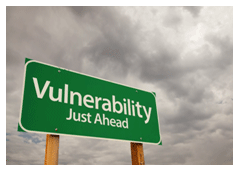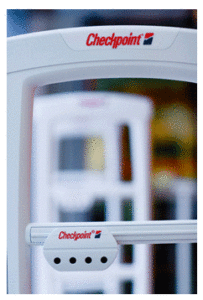 Having to balance a customer friendly environment that makes patrons feel like you want their business and keeping a structure in place that ensures the store is profitable can be difficult. This is especially true when it comes to customer returns. At times, return policies even seem to put store management and loss prevention teams at odds with each other. On one hand, stores are afraid that a strict return policy will turn off regular customers and result in a loss of business. On the other hand Loss Prevention teams in their efforts to…well…prevent losses have a tendency to want to tighten procedures on everything. There is an argument to be made for both sides but there may also be a happy middle ground where both can come to an agreement.
Having to balance a customer friendly environment that makes patrons feel like you want their business and keeping a structure in place that ensures the store is profitable can be difficult. This is especially true when it comes to customer returns. At times, return policies even seem to put store management and loss prevention teams at odds with each other. On one hand, stores are afraid that a strict return policy will turn off regular customers and result in a loss of business. On the other hand Loss Prevention teams in their efforts to…well…prevent losses have a tendency to want to tighten procedures on everything. There is an argument to be made for both sides but there may also be a happy middle ground where both can come to an agreement.
Customers can and do lose receipts and in many instances, this hinders the person’s ability to get a refund and in some stores, it may even prevent an exchange of merchandise. In some of these situations, the customer may only be seeking to exchange an item for a different size, color or design and yet the manager sticks to the policy regardless of circumstances. This hardline approach can and does anger many shoppers and it will result in lost business. Yes, the policy is in place and the intentions of it are good but the lack of flexibility in not permitting even an even exchange or a trade for a similar item can be a poor choice. A store will pay for that decision through the loss of future sales.
Many stores have gone to the extreme of allowing an exchange or return giving the shopper up to 365 days to make a return! In a cbsnews.com article, “15 Stores With The Best Return Policies”, by Maryalene LaPonsie, Nov. 22, 2017, they reference 15 stores that have some of the best (read easiest) return policies. The article points out that even among these stores a bit of tightening up on the policies had to be done due to return fraud and abuse. Still, consumers will find that even without receipts they can at least receive store credits towards future purchases. Not too bad for losing a receipt and keeping merchandise for a year.
From a Loss Prevention perspective, this seems far too excessive and an abuse of a retailer’s goodwill. Taking back a return that is a year old or even 90 days old means that item has dropped in value due to markdowns or because it is out of season and no one is going to purchase it. Loss Prevention departments are concerned with profitability just as are store managers but tend to see things in more immediate terms. Taking that winter coat back in July means that it is either going to take up valuable stockroom space or will have to be marked down. Is there some way to come to an understanding between Loss Prevention concerns and store manager concerns?
Shoplifters do abuse store return policies often on repeat occasions. A May 14, 2018 article by journaltimes.com staff, “Racine woman charged for Walmart thefts”, reported on a woman who was caught on camera entering a Walmart store, selecting an airbed and taking it to the return desk and receiving a gift card. She was caught on camera committing the same type of theft about three weeks later at the same store. The story reported that the suspect had a history of shoplifting in the county dating back to 1991. In a related story from Houstonherald.com, May 21, 2018, a woman entered a Walmart store and “placed several items into a cart including DVD’s, floor mats, jeans, household goods and groceries.” The story relates that she went to the service desk and made returns for items she hadn’t bought and was able to get about $64 cash. This offender also had a history of 10 prior theft convictions.
Store owners and Loss Prevention officials need to devise clear-cut policies that provide fair returns and refunds to honest customers while putting roadblocks in place for criminals. Once policies are hashed out and agreed upon, consistency in administering those policies is required. Deviating and making exceptions only opens up the door to return fraud and abuse and takes you back to square one and career shoplifters will continue to abuse your goodwill.
 Actions based on good intentions don’t always have good results. One of the most famous of missteps was the Coca-Cola attempt to improve its formula and market “New” Coke. The idea was well-intentioned but the public reception was cool if not outright hostile. According to the website INVESTOPEDIA, “ “Classic Coke” returned to the shelves less than three months after it had been retired.” In the same article, they point out that in 2008 the manufacturer of Motrin found out that there was a problem with the medicine not dissolving properly. Reportedly they did not want to “incur the associated negative publicity, the firm sent out secret shoppers to buy the products off of store shelves, which resulted in a lawsuit in Oregon in 2011.” (“8 Good Intentions With Bad Outcomes”, Lisa Smith, updated December 15, 2017). Laws can have the same problems of unintended consequences, helping one constituency while hurting another.
Actions based on good intentions don’t always have good results. One of the most famous of missteps was the Coca-Cola attempt to improve its formula and market “New” Coke. The idea was well-intentioned but the public reception was cool if not outright hostile. According to the website INVESTOPEDIA, “ “Classic Coke” returned to the shelves less than three months after it had been retired.” In the same article, they point out that in 2008 the manufacturer of Motrin found out that there was a problem with the medicine not dissolving properly. Reportedly they did not want to “incur the associated negative publicity, the firm sent out secret shoppers to buy the products off of store shelves, which resulted in a lawsuit in Oregon in 2011.” (“8 Good Intentions With Bad Outcomes”, Lisa Smith, updated December 15, 2017). Laws can have the same problems of unintended consequences, helping one constituency while hurting another. Reviewing your store policies today and training your employees about the ramification of not following them properly is imperative. The consequences of not following those policies properly are too costly to postpone. Employees, as they are human, try to use shortcuts or in some instances, take the easy way out while doing some chores without thinking it may affect the bottom line at the end of the day. Profits for a store cannot be thought of as profits for the owner only, employment and benefits for the employees are inherently tied to those of the owner. If the owner must close the store for loses, the employees lose as well.
Reviewing your store policies today and training your employees about the ramification of not following them properly is imperative. The consequences of not following those policies properly are too costly to postpone. Employees, as they are human, try to use shortcuts or in some instances, take the easy way out while doing some chores without thinking it may affect the bottom line at the end of the day. Profits for a store cannot be thought of as profits for the owner only, employment and benefits for the employees are inherently tied to those of the owner. If the owner must close the store for loses, the employees lose as well. Inventory in a retail store can offer the management and the loss prevention team a clear picture of whether their efforts are working or they need to modify something entirely different.
Inventory in a retail store can offer the management and the loss prevention team a clear picture of whether their efforts are working or they need to modify something entirely different.  Shoplifters seem to be getting bolder than ever. Much of this is greed. Many people simply want stuff and have no moral compass. Others are emboldened by lax law enforcement or Politicians that pass laws that do little to protect you. Whatever the case be, it has a negative impact on Retailers. We are expected to open our stores, compete, pay employees, pay expenses, taxes…. And make a profit. Shoplifting theft is yet another pressure on us.
Shoplifters seem to be getting bolder than ever. Much of this is greed. Many people simply want stuff and have no moral compass. Others are emboldened by lax law enforcement or Politicians that pass laws that do little to protect you. Whatever the case be, it has a negative impact on Retailers. We are expected to open our stores, compete, pay employees, pay expenses, taxes…. And make a profit. Shoplifting theft is yet another pressure on us. Summertime is here and now is the time for children to rejoice and shout for glee as most are finishing up their school year. Put away the pens and paper and lunchboxes and prepare to enjoy the warm, sunny days. No Mr. and Ms. Retailer, not YOU, the children. The moment the schools let out is the moment you should be preparing to roll out the merchandise for the next school year. Wait too long and you will be a step or two behind your competition.
Summertime is here and now is the time for children to rejoice and shout for glee as most are finishing up their school year. Put away the pens and paper and lunchboxes and prepare to enjoy the warm, sunny days. No Mr. and Ms. Retailer, not YOU, the children. The moment the schools let out is the moment you should be preparing to roll out the merchandise for the next school year. Wait too long and you will be a step or two behind your competition. The IT world has a phrase “garbage in, garbage out”. The same concept applies to hiring new employees. If you do not put effort into selecting a new employee, then chances are you will be disappointed down the road.
The IT world has a phrase “garbage in, garbage out”. The same concept applies to hiring new employees. If you do not put effort into selecting a new employee, then chances are you will be disappointed down the road. March is known for coming in like a lion and going out like a lamb. April showers bring May flowers but what in the world does May bring? May ushers in the summer sales season! Spring is wrapping up and now is the time to be getting your store ready for all of the shoppers looking for the items that will make the long, warm days of June, July and August a memorable time. The big stores are rolling out grills, picnic wares and yard games.
March is known for coming in like a lion and going out like a lamb. April showers bring May flowers but what in the world does May bring? May ushers in the summer sales season! Spring is wrapping up and now is the time to be getting your store ready for all of the shoppers looking for the items that will make the long, warm days of June, July and August a memorable time. The big stores are rolling out grills, picnic wares and yard games. What do you do when a crisis occurs? Many people would say they take steps to address the crisis. Initially, that may sound like a good response unless you never planned on how you would react if that crisis were to take place. Think about it for a moment. If your business was on fire would you want firemen pulling up in their cars without the right gear or a plan of action of how they will take care of the fire? Sure it’s good to have the firemen there but if they don’t have the resources they need or a strategy on how to put out a house fire then the response is pointless. Police officers train on how to respond to a bank robbery in progress but the reality is many officers will never face that situation. According to a Cleveland Clinic Survey, 54% of Americans say they know CPR but the vast majority of us will never be called upon to use that training. So why do we do it? Why do we train for circumstances that are unlikely to ever confront us? We do it so we will be prepared for that one-in-a-million chance that we might have to apply that knowledge. President John F. Kennedy once said, “The time to repair the roof is when the sun is shining.” Attempting to play it by ear should an emergency happen is not a plan and may even make a problem worse.
What do you do when a crisis occurs? Many people would say they take steps to address the crisis. Initially, that may sound like a good response unless you never planned on how you would react if that crisis were to take place. Think about it for a moment. If your business was on fire would you want firemen pulling up in their cars without the right gear or a plan of action of how they will take care of the fire? Sure it’s good to have the firemen there but if they don’t have the resources they need or a strategy on how to put out a house fire then the response is pointless. Police officers train on how to respond to a bank robbery in progress but the reality is many officers will never face that situation. According to a Cleveland Clinic Survey, 54% of Americans say they know CPR but the vast majority of us will never be called upon to use that training. So why do we do it? Why do we train for circumstances that are unlikely to ever confront us? We do it so we will be prepared for that one-in-a-million chance that we might have to apply that knowledge. President John F. Kennedy once said, “The time to repair the roof is when the sun is shining.” Attempting to play it by ear should an emergency happen is not a plan and may even make a problem worse.